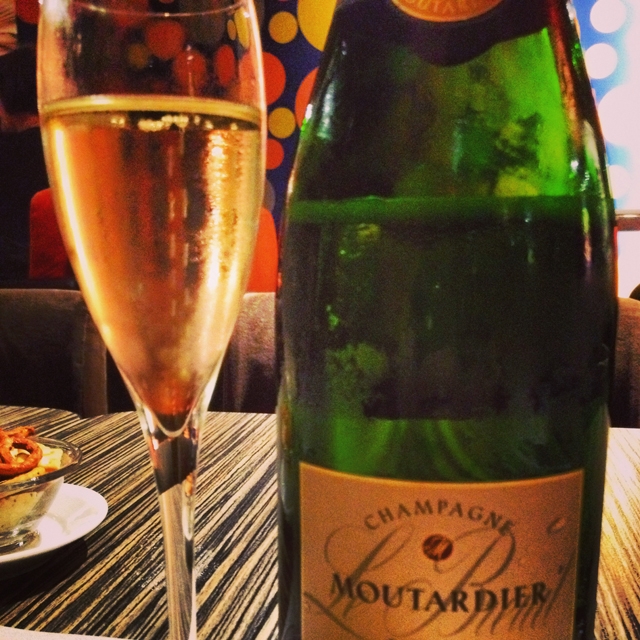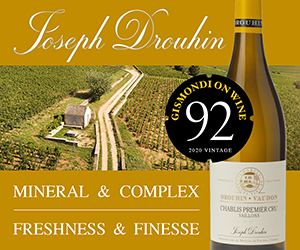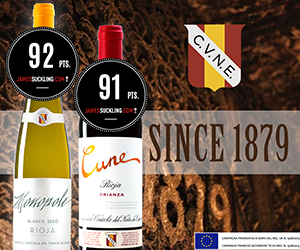Some 30 years down the wine path I’m still baffled by the North American resistance to open, share, and drink sparkling wine on a regular basis.
Oh sure, birthdays, anniversaries, graduations, weddings — almost any life changing moment — invites a glass or two of sparkling wine but do we really need an occasion to enjoy some of the best wine in the world?
Confounding the issue is sparkling wine’s ability to make most any food it is served with taste better. Add to that its remarkable ability to actually lift one’s spirit and you have a drink that should be irresistible. A glass or two, a couple of times per week, should not be out of the realm of possibilities.
Spanish and French consumers are excellent role models when it comes to embracing bubbles no matter what the occasion. With Christmas and New Year just over a month away we thought Salut might provide the perfect vehicle to inspire you to begin investigating the joys of sparkling wine and laying a few bottles away for just the right holiday moments.
Imagine being so prepared ahead of time all you need do is reach into the refrigerator and grab a perfectly chilled bottle and pop the cork before your guests are seated.
In the spirit of giving we will supply you with all you really need to know to wow your visitors (which frankly isn’t much more than opening a bottle of sparkling wine when they least expect it):
• Focus on where the wine is made and which technique is used to get the bubbles in the bottle. When it comes to price you usually get what you pay for. After that Champagne the region is the only place Champagne the wine is made. If it comes from anywhere else in the word it should only be referred to as sparkling wine. All Champagne is sparkling wine but not all sparkling wine is Champagne.
• Temperature is important — it should not be too cold and never warm, about 5 to 6 C should do it. Put the bottle in the refrigerator for 30 minutes (the top milk shelf is the coldest spot) or plunge the bottle into ice and water for 15 minutes before serving.
• Serve sparkling wine in any glass, from the classic, tall, thin flute to a full-sized standard wine glass. Many now believe the larger, wider bowl enhances any well-crafted bubble.
• Shaking the bottle and expelling the cork across the room looks good in the movies but when you open sparkling wine it’s best to grasp the cork in one hand and rotate the bottle with the other until the cork gently and quietly slides out.
In Canada our fizz origin options include France, Italy, Spain, California and increasingly British Columbia with a smaller selection from Chile, Argentina, Australia and Germany. Now, where does one begin?
Spanish sparkling wine, easily identified worldwide as cava, is as good as any a place to begin your adventures. Cava is made in the same method as Champagne (the second fermentation is inside the bottle thus creating the famous tiny bubbles). Although European Union rules prohibit Spain from using the French term méthode champenoise on it labels, look for the Spanish equivalent método Tradicional on the label.
In Spain most cava is invariably a blend of three grapes: macabeo, parellada and xarel-lo. There is attractive nutty character to these dry sparklers as well as a whiff of fresh fruit. There are mostly dry and very food friendly and reasonably priced — often in the mid-teens. Tapas were made for cava.
In France, non-champagne sparklers, or crémant, are made in most areas although the most interesting and affordable usually come from Burgundy, Limoux and the Loire.
The term crémant is used across Europe to indicate the wine is harvested by hand, aged for one year in the bottle and of course that it is made using the méthode champenoise.
If the wine is carbonated or made using other bulk methods, it is tagged mousseux, which is French for sparkling wine. These dry crisp sparklers are fabulous with smoked salmon, crab, scallops, and clams — just about anything you can think to serve.
In Germany, nearly all sparkling wines, or sekt, are carbonated in huge tanks. In South Africa, cap classique designates sparkling wine made in the traditional French method. Prosecco is the latest Italian sparkling wine craze. Less pressure and more sugar have made this a favourite with the younger crowd but Prosecco can be equally inviting to those who love and serve spicy pre-dinner appetizers.
We are finally beginning to grasp the awesome potential of British Columbian sparkling wine, especially when it’s made in the classic Champagne method, or what we term méthode traditionnelle. Abundant acidity and pristine fruit make for a terrific foundation as we begin to research the endless paths to complexity through better lees management and bottle aging.
Historically Sumac Ridge, Summerhill and Blue Mountain have ruled the roost but exciting work from Bella, Gray Monk and Haywire are quickly closing the gap. Let this year’s holiday season be the start of a year round commitment to open, drink and share more sparkling wine.
Our picks:
Anna de Codorníu Blanc de Blancs, Spain, $18, is an almost all-chardonnay Blanc de Blancs, and a delicious, inexpensive cava covered in a stunning full white wrap label. Food-friendly and stylish it is the perfect holiday pour. Heat some cheese straws in the oven and you have a stellar pre-party pairing. Super value.
The Parés Baltà Cava Brut B, $20, is another go-to Spanish sparkler that over — delivers. You will love fresh, nutty, creamy, apple skin aromas and its nutty, mineral, floral flavours. Sophisticated and clean, it works with most foods and the grapes are 100 per cent organically grown. Green never tasted so good.
Many of you will know the Blue Mountain Brut (Gold Label) N/V, Okanagan Falls, $24. This mix of 57 per cent Pinot Noir, 37 per cent Chardonnay and 6 per cent Pinot Gris is stored for 24 months in glass, disgorged and kept another six to nine months before release. Pair with most anything you can think of.
Completely different but equally worthwhile drinking is the Oliver, B.C.’s Stoneboat Vineyards Piano Brut N/V, $23. Made in a tank, charmat-style this bubble comes with perfumed, nectarine, green apple, floral, ginger, grapefruit, lime rind flavours. The finish is just off-dry. Would be perfect with pakora.
To France and Champagne we go to Moët & Chandon Impérial Brut, $67. A generous 20 to 30 per cent reserve wine contributes to the round, fresh palate and honey, baked apple, citrus and mineral flavours. As an aperitif think sushi, dumplings and smoked salmon.
One of the classiest sparklers in government stores at a phenomenal price, France’s Champagne Le Mesnil N/V, Champagne, $55 is all about purity and complexity pushing its delicate fruit into the background allowing the minerality and brioche notes to play a prominent role in the bottle. A rare grand cru at this price that easily over delivers in the Champagne category. Gougeres anyone?
Louis Bouillot Perle d’Aurore Rosé Crémant de Bourgogne, $26, is an 80/20 mix of French Pinot Noir and Gamay with an orange-ish/rosé colour and cherry, strawberry, anise and citrus/lees flavours. Just a hint of sweetness makes richer spicier appetizers an easy match. Swedish meatballs would be a fine choice.
Our festive Prosecco is the Bottega Gold Spumante Brut N/V, $25. The gold wrap is eye-catching, while the wine is delightfully fresh with creamy baked pear, peach, almond and citrus flavours. Restrained in style with a drier profile it is very harmonious with food.
German sekt is now well represented in Canada but when you taste the Selbach-Oster Riesling Brut 2011,$36, form the Mosel Valley you will wonder why. Selbach likes his wine like he likes his fruit: crisp and crunchy. Expect its stylish, green apple, grassy, nectarine and lime flavours to pair with oysters, cheese straws, sashimi and more.
La Stella Moscato D’Osoyoos 2013, $20, takes its moscato cues from Piedmont’s famed d’Asti region. Light and airy, floral and riddled with orange and apricot fruit it is an impressive bottle of frizzante moscato. At only eight per cent alcohol it is a perfect pre-dinner pour or serve it with cakes and fresh fruit or dessert.
From Tasmania, Australia, the Jansz Premium Cuvée N/V, $30, sparkler will supercharge any party appetizers. Creamy textures and bright fruit put it a notch above good, with excellent acidity and toast. A compelling drink for the price.
Franciacorta is one of the stars of Italian bubbles, and the Bellavista Franciacorta Cuvée Brut, $30 (375ml), should be on your list. Cherries, baked apple, honey, spicy, and nutty fruit flavours suggest finesse. At private wine stores only. Tuna tartare is a great match.

 quicksearch
quicksearch






